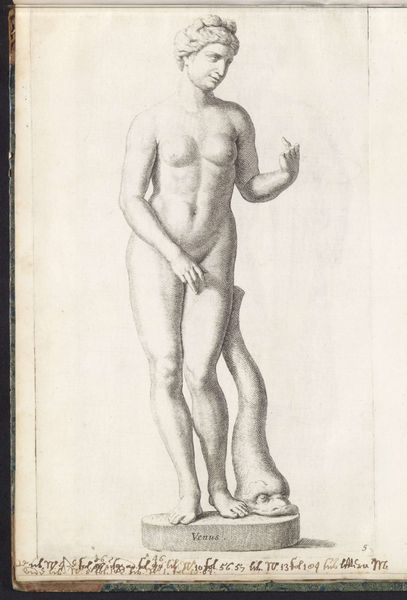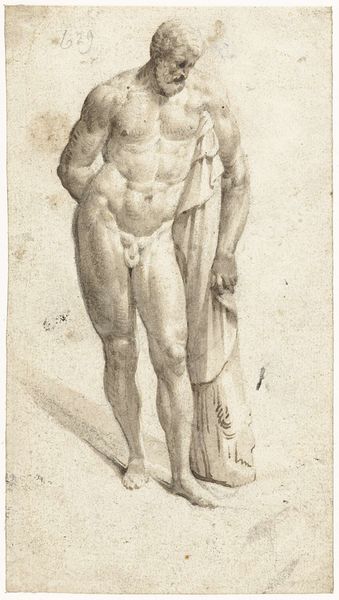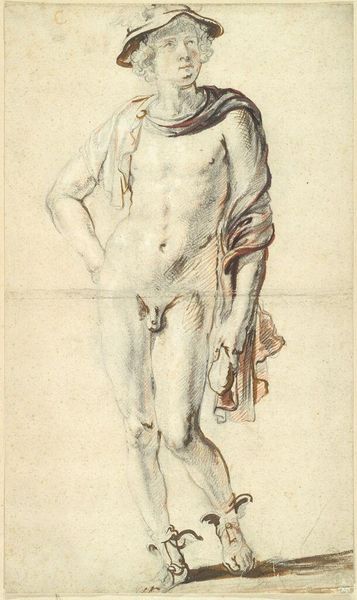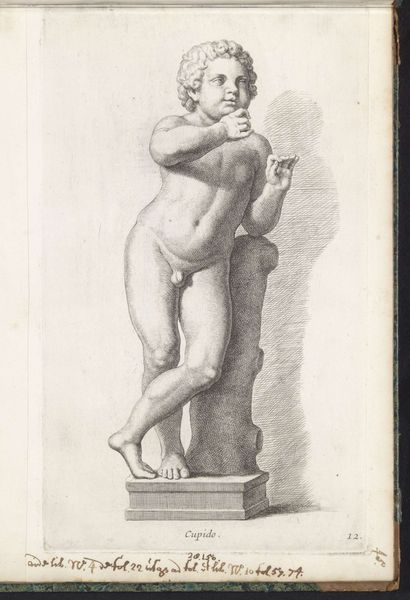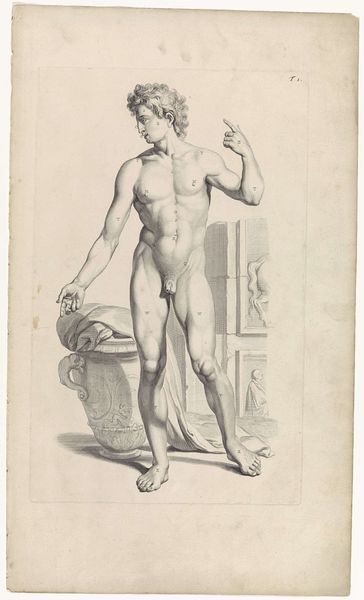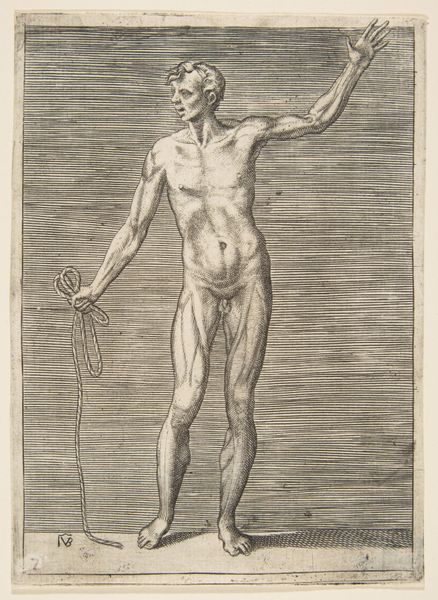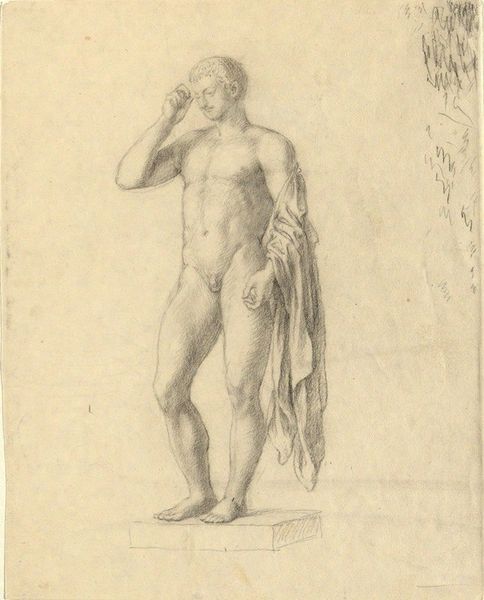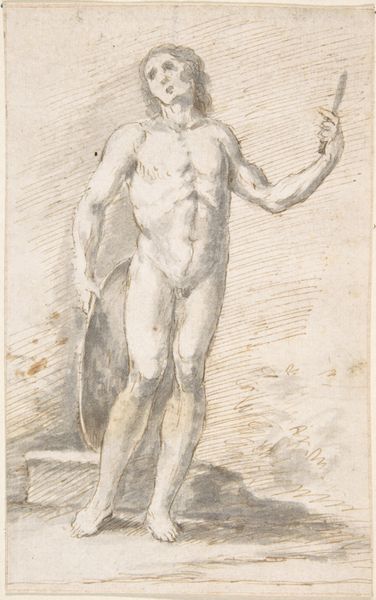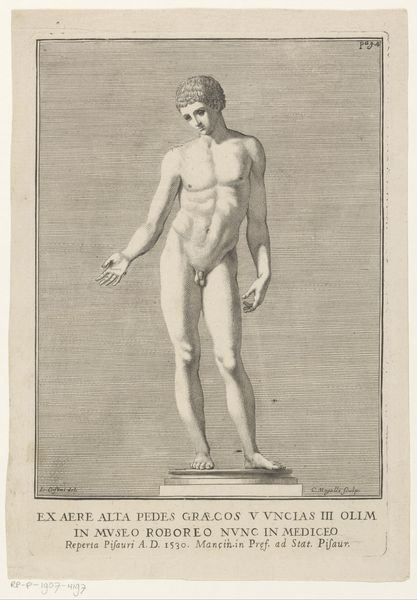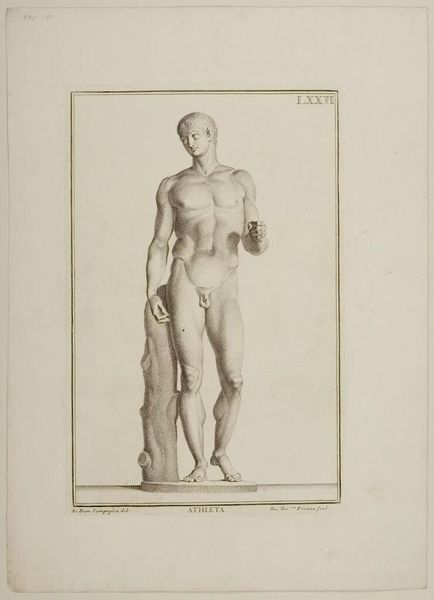
#
toned paper
#
light pencil work
#
pencil sketch
#
charcoal drawing
#
charcoal art
#
portrait reference
#
pencil drawing
#
underpainting
#
portrait drawing
#
watercolor
Dimensions: height 330 mm, width 202 mm
Copyright: Rijks Museum: Open Domain
Curator: Here we have "Sculpture of a Gladiator" by Hubert Quellinus, dating roughly between 1646 and 1670. It's currently held in the Rijksmuseum. Editor: My first thought? This feels more… intimate than I expected. It's a study, a fleeting observation rather than a heroic proclamation. The stark nudity kind of amplifies that vulnerability. Curator: Exactly! It's the immediacy of the medium, pencil and charcoal on toned paper. You feel the artist's hand directly. This wasn't meant as a finished piece, but rather an exploration of form and light. Quellinus clearly paid close attention to the distribution of shadow, building form out of delicate hatches. It speaks to the material, humble in its making. Editor: Right, this feels more about craft than content. Think about where Quellinus sourced the materials. The labor involved in producing even toned paper wasn't trivial! How does that pre-industrial context change our viewing? This wasn't some mass-produced paper, readily available, or something casually acquired. Curator: A very good point, especially in thinking about the model he’s observing. There's a deliberate attempt to render the gladiator not as a mythological hero but a real person with all their physical particularities, which at that time period and because he is nude could be interpreted as erotic. Editor: Definitely agree about the erotic charge – a display, sure, but not purely about aesthetic prowess. More the tactile exploration of human flesh, how it drapes and folds with a bit of awkward vulnerability in the gesture. The man almost looks apprehensive. Curator: Apprehensive maybe because the artist, instead of just glorifying him, humanized the model through humble, mundane art making. In short: laboring in both model and art. Editor: Yes! This piece transcends simple objectification; it’s an artifact layered with social, and even sexual power dynamics played out in labor practices of early workshops. We get an unassuming glimpse of a bygone process. Curator: Seeing how Quellinus transformed simple materials, the ordinary into something enduring, truly deepens our encounter with this work. It's the magic trick every artist performs to let the audience find its inner humanity through creative art. Editor: And with all its unpretentious, unedited imperfections that have to make space for the human within, instead of just aspiring towards a heroic marble exterior. It brings history closer, layer by careful layer.
Comments
No comments
Be the first to comment and join the conversation on the ultimate creative platform.
